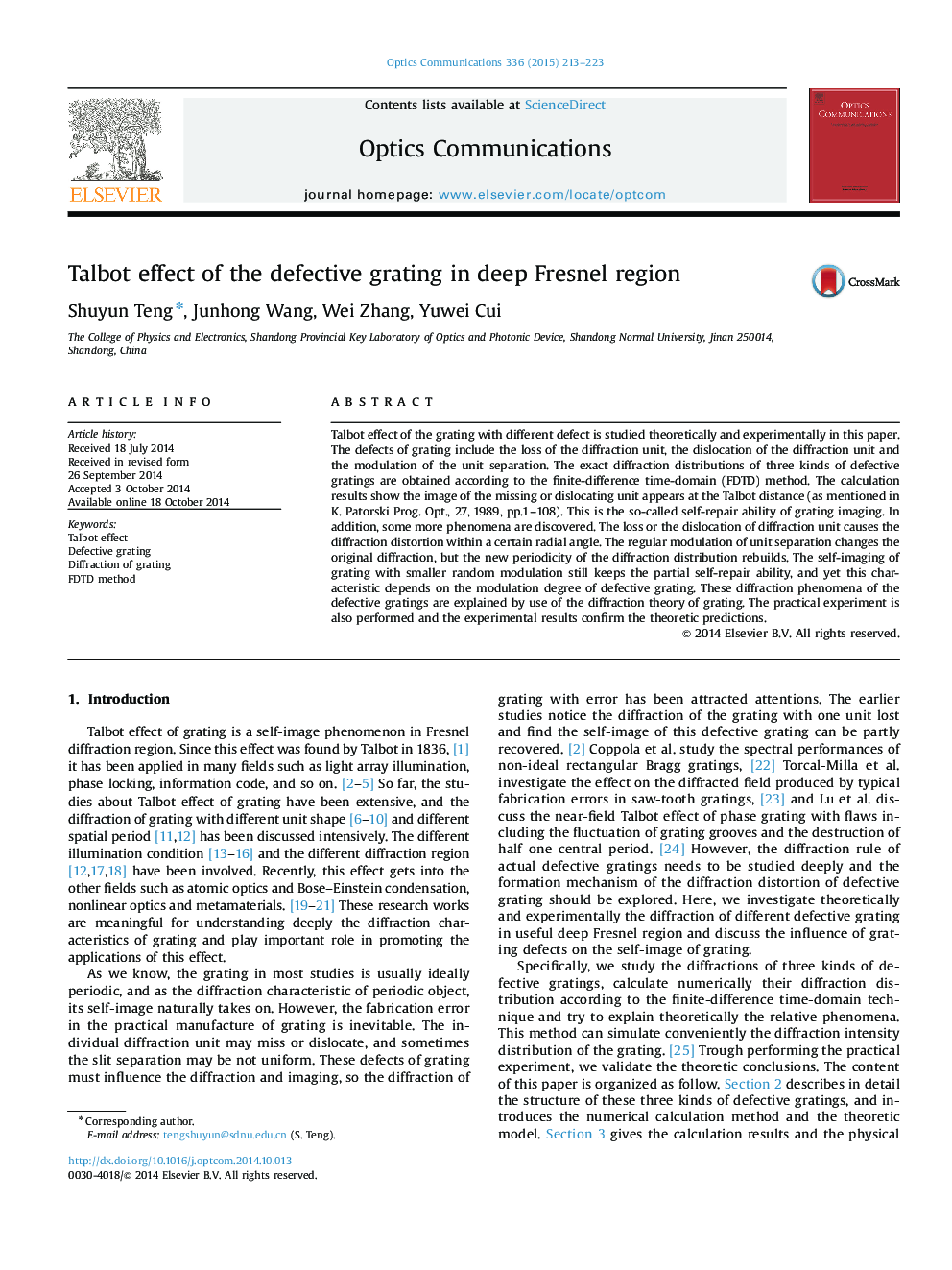| Article ID | Journal | Published Year | Pages | File Type |
|---|---|---|---|---|
| 7930308 | Optics Communications | 2015 | 11 Pages |
Abstract
Talbot effect of the grating with different defect is studied theoretically and experimentally in this paper. The defects of grating include the loss of the diffraction unit, the dislocation of the diffraction unit and the modulation of the unit separation. The exact diffraction distributions of three kinds of defective gratings are obtained according to the finite-difference time-domain (FDTD) method. The calculation results show the image of the missing or dislocating unit appears at the Talbot distance (as mentioned in K. Patorski Prog. Opt., 27, 1989, pp.1-108). This is the so-called self-repair ability of grating imaging. In addition, some more phenomena are discovered. The loss or the dislocation of diffraction unit causes the diffraction distortion within a certain radial angle. The regular modulation of unit separation changes the original diffraction, but the new periodicity of the diffraction distribution rebuilds. The self-imaging of grating with smaller random modulation still keeps the partial self-repair ability, and yet this characteristic depends on the modulation degree of defective grating. These diffraction phenomena of the defective gratings are explained by use of the diffraction theory of grating. The practical experiment is also performed and the experimental results confirm the theoretic predictions.
Keywords
Related Topics
Physical Sciences and Engineering
Materials Science
Electronic, Optical and Magnetic Materials
Authors
Shuyun Teng, Junhong Wang, Wei Zhang, Yuwei Cui,
